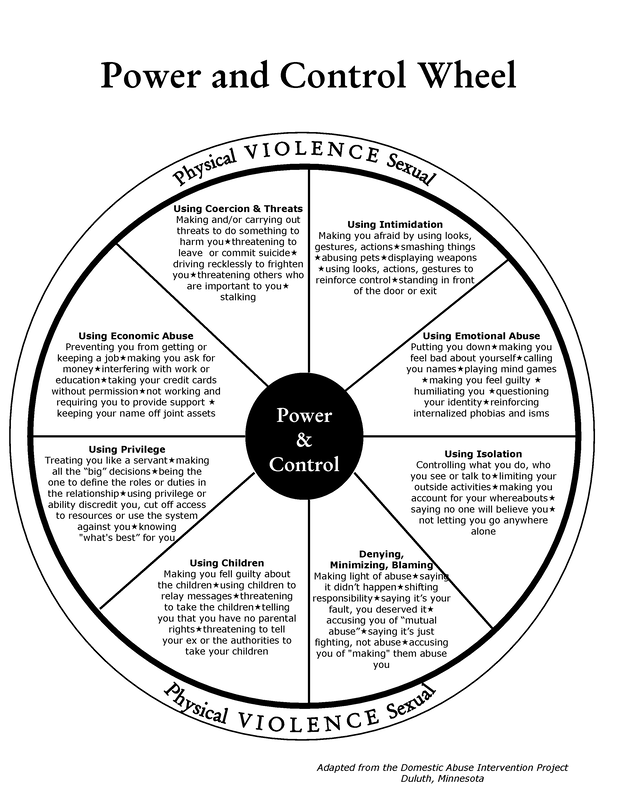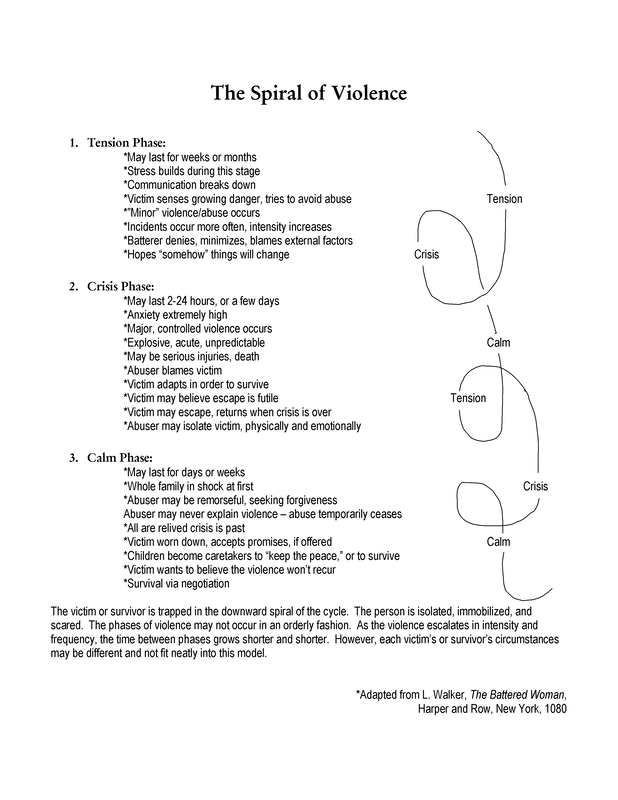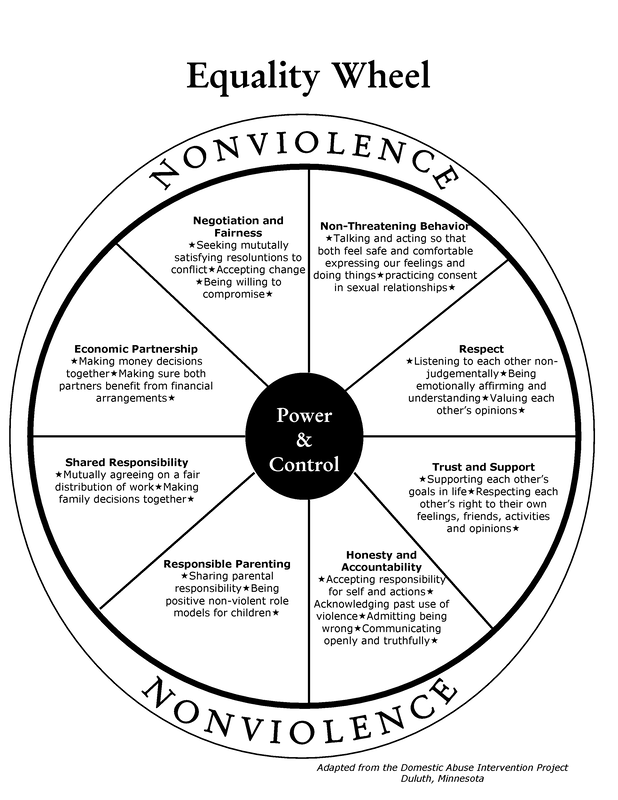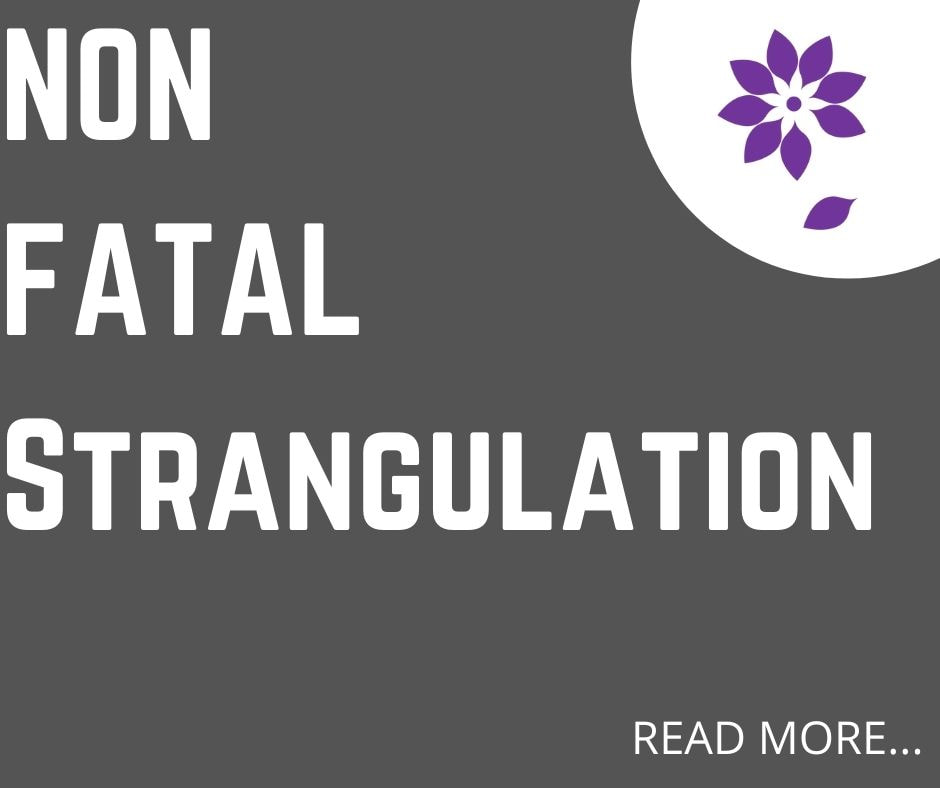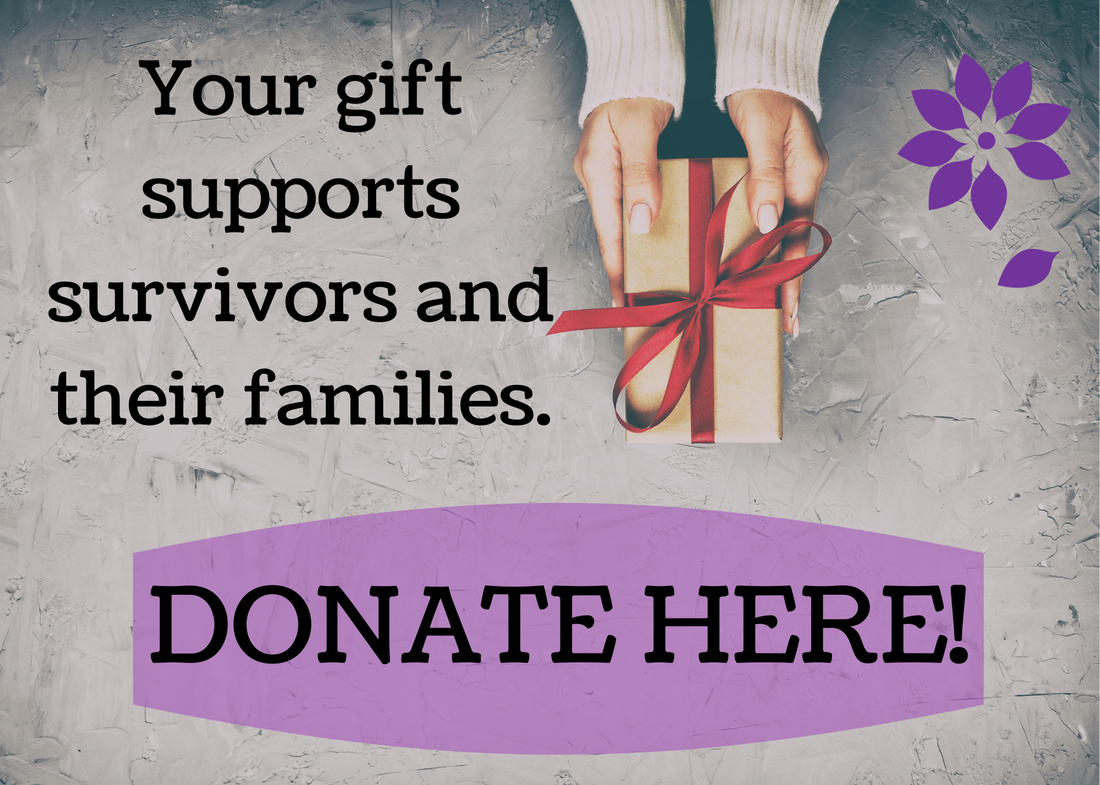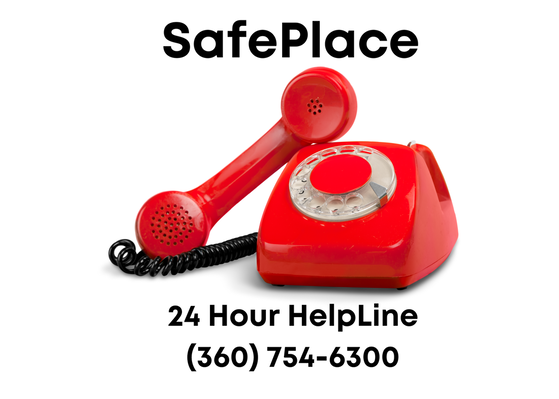Awareness: The first step to social and societal change.
At SafePlace, we believe that increased awareness can help all of us protect our family and friends. We hope the following will offer information to help identify and better understand domestic violence.
What is Domestic Violence?
|
Domestic violence (intimate partner violence, relationship abuse) is a pattern of assaultive, coercive, dominating, and punishing behaviors perpetrated by one intimate partner to another.
Abusers use a variety of tactics, not just physical violence, to control a victim’s behavior or make them feel less than. Tactics can include physical, sexual, and psychological attacks, as well as economic coercion. Domestic violence is also cyclical. The Spiral of Violence (below) illustrates these experiences of survivors. The time lapse between phases varies by hours, days, weeks, months, even years. Washington State defines domestic violence in RCW 26.50 as:
|
Why does this happen?
|
We learn about relationships from representations around us. If violence existed in our family of origin, we often use that model in developing relationships with others. Sometimes that means a person will model an abusive person. Domestic violence is a learned behavior and can be unlearned. Although these can run concurrent and influence abuse, domestic violence is not caused by anger, psychological problems, drugs and alcohol, or other common assumptions.
What we see in the media, on T.V., in magazines, and in music videos also has a tremendous influence on our actions and how we play out relationships. Often, relationships and sexual acts are portrayed as violent and/or dominating, and women are shown as objects or enjoying abuse. These factors also contribute to a culture of violence that supports things like domestic violence and rape. |
Domestic Violence and issues of oppresion
Relationship abuse happens most often in relationships where there is a power imbalance that can be exploited. We see this exploitation play out in sexist, misogynist, racist, xenophobic, homophobic, heterosexist, transphobic, and classist ways.
An example of this would be an American citizen who marries someone from another country and exploits the fact that their partner does not speak English or know their rights in this country or know what is customary in the U.S. The citizen can leverage their knowledge and privilege to control the immigrant partner by telling them that they can’t call the police or that they have to rely on them for immigration status.
An example of this would be an American citizen who marries someone from another country and exploits the fact that their partner does not speak English or know their rights in this country or know what is customary in the U.S. The citizen can leverage their knowledge and privilege to control the immigrant partner by telling them that they can’t call the police or that they have to rely on them for immigration status.
What does a HEALTHY RELATIONSHIP look like?
|
Relationships are partnerships with equal commitment of the people involved. This wheel illustrates some of the vital pieces to nurturing equality in relationships.
It is important to find a balance between respecting your partner’s opinion and getting what you need out of a relationship. If you find your partner’s activities distasteful or if you have differing political or religious beliefs, for example, you may want to end your relationship because it doesn’t work for you. This is not abusive, but merely taking care of your individual needs until you can find a partner that better matches you. |
Non-fatal Strangulation
A SafePlace advocate will be available to support you during your exam and to provide additional resources and safety planning.
|
50% of non-fatal strangulation survivors have no visible signs of strangulation. Symptoms of strangulation can show up many days or weeks later. Some of these symptoms include
neck pain ringing in ears memory loss sore throat vision problems St. Peters Hospital provides exams if you have been strangled in the last days, weeks, or months. |
